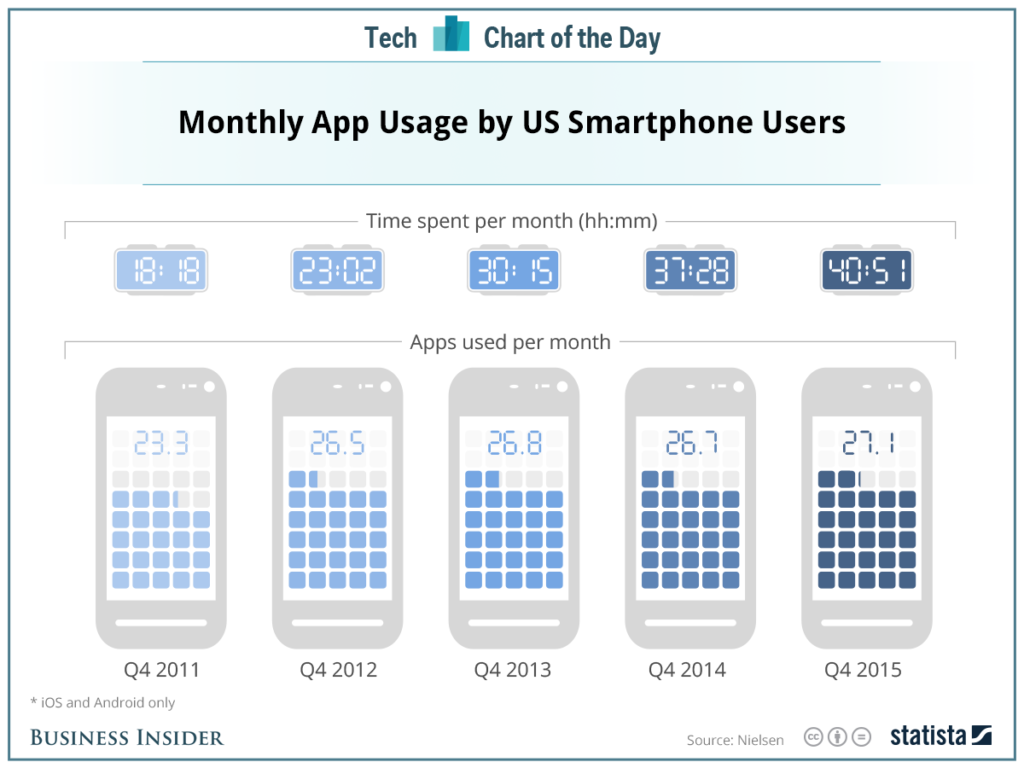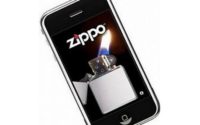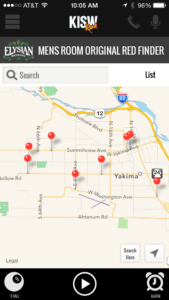 In today’s JacoBLOG, jācapps COO, Bob Kernen, weighs in about changes in the mobile app ecosphere and what they mean to the radio industry. The space is changing – and fast – and that puts pressure on brands, content creators, and yes, app developers to do their best work. Bob creates a 10-step checklist that will hopefully help you evaluate and assess your mobile activity.
In today’s JacoBLOG, jācapps COO, Bob Kernen, weighs in about changes in the mobile app ecosphere and what they mean to the radio industry. The space is changing – and fast – and that puts pressure on brands, content creators, and yes, app developers to do their best work. Bob creates a 10-step checklist that will hopefully help you evaluate and assess your mobile activity.
To get the maximum impact of Bob’s post, you might want to have your smartphone handy, and put your own app to the test. And BTW, how many apps do you have on your smartphone? – FJ
We recently came across an article from Business Insider with the ominous headline, “The App Explosion Is Over.” Since jācapps has a lot invested in the space, it got our attention. Beyond the provocative headline, the point of the article is that growth in the mobile application space has leveled off – the average number of apps used by a typical smartphone owner has been around 27 for the past four years. You can see that clearly on the Statista slide below:
 But there’s another side to this story – and that relates to how engaged mobile users are with the apps they download and use. This same chart shows that time spent using those apps continues to steadily increase, from a monthly average of around 18 hours back in 2011 to nearly 41 hours today.
But there’s another side to this story – and that relates to how engaged mobile users are with the apps they download and use. This same chart shows that time spent using those apps continues to steadily increase, from a monthly average of around 18 hours back in 2011 to nearly 41 hours today.
In essence, that means TSWA (time spent with apps) has more than doubled in just five years. That might suggest that while consumers are more discriminating about the apps they download, their reliance on their mobile devices – and apps, specifically – has amped up.
So the app “explosion” may be over, but that’s okay. Explosions are messy, chaotic, and cause a lot of damage. The days of gimmicky apps  (remember iFart or the Zippo lighter?) are history. Today, your apps have to provide lasting value. And to be one of those essential 27 apps, you will have to meet high consumer expectations for utility and performance. Your app must do the job it was “hired” to do, day in and day out.
(remember iFart or the Zippo lighter?) are history. Today, your apps have to provide lasting value. And to be one of those essential 27 apps, you will have to meet high consumer expectations for utility and performance. Your app must do the job it was “hired” to do, day in and day out.
Think of a consumer’s mobile phone with 27 presets (and remember that’s the average). In radio terms, the key is becoming one of those options that’s just a fingertip away. Then you have to make sure your content and user experience are strong enough to keep your app locked in on all those smartphones.
As the creators of 1,000 apps over the past 7+ years, we’ve learned a lot about what makes a great app and a positive user experience. Here is what you need to do to succeed in this frenetic, but important space:
1. Have a strategy.
Sounds basic, but your app needs a strategy just like your station does. A mission for your app takes the guesswork out of mobile.
2. What’s the one thing?
Make sure your app fulfills a key need, and delivers an outstanding user experience. If the quality of your stream is suspect or ad insertion is buggy, you are giving mobile users a reason to go elsewhere, or worse, delete your app. Streaming is the number one reason radio apps are used, so make sure it’s loud, clear, and performs without interruptions.
3. Provide reasons for everyday use.
People use Facebook to check in to see what’s happening. Your apps should provide similar value. Publish and promote new content and events each day. Be more than a streaming utility. Be a part of your audience’s daily routine.
4. Provide engagement.
Don’t think of the smartphone as just a receiver. It’s the digital hub of a listener’s life and can distribute content as well as receive it. Ensure that your app easily shares content like podcasts and videos on social media. Make the app the way for listeners to communicate with your station personalities. Features like Open Mic and video sharing can feed audio and videos directly to consumers on their preferred devices.
5. Promote it.
Don’t let the app become the bright, shiny object. Most stations promote their app for the first few weeks after it goes live, and then move onto other things. This is a mistake. The app needs to be continuously marketed, and the message needs to be more than just “download our app to hear our station.” Promote the tangible benefits of your app – “take us on vacation,” “listen at work,” or “use the alarm to wake up with our morning show.”
6. Streamline it.
In most cases, “kitchen sink” apps provide a confusing experience because there’s too much stuff or it’s just too stylized. Apps that don’t clutter themselves with unimportant functionality or “cool” design perform the best.
7. Metrics don’t lie.
Your, stream, on-demand content, and social media will probably dominate. Everything else resides in the “long tail.” Study this stuff to learn how to continually improve your app throughout the inevitable next versions.
 8. Find your secret sauce.
8. Find your secret sauce.
What is unique about your station that can be transformed into a great app experience? Early on, KISW/Seattle created the “Magic 9-Ball” where users can shake the app to get answers to quirky questions like “Why I didn’t text you back.” These days, a great feature is their “Mens Room Red Finder,” providing geolocation to find your favorite beer. What’s the one killer feature in your app that engages users and even gets them talking?
9. Keep up with the times.
In the early years, we looked at app updates as admissions of problems, and we tried to avoid them. Today, these updates represent adjustments, enhancements, improvements, and tweaks designed to create a better experience. The biggest and best apps – in particular – are constantly working on upgrades with their developers to keep up with the changes. It’s key your app developer isn’t in a “set it and forget it” mindset because every app needs to evolve.
10. The car.
What would a discussion of apps be without automotive? Our most recent Techsurvey shows that more than six in ten drivers are now able to connect a mobile phone to their cars. And with Apple and Google now moving quickly to ensure their respective ecosystems are front and center in the dash, it’s essential your app developer is knowledgeable and up to speed about adapting your app to be compatible with these platforms.
While most people don’t have 100 apps on their smartphone desktops, these amazing devices are the dominant way your audience accesses information and entertainment. Mobile phones are anti-boredom devices, providing great utility wherever your audience goes. Slogans that reminded consumers that radio is with them at home, in cars, and at work may still make sense, but the truth is, it’s their smartphones that are always with them, and your station should be, too.
If we can help you design a great app, evolve one you’re currently using, adapt your app to the Apple and/or Android platforms, or help you develop your mobile app strategy, don’t hesitate to connect with us. The bar is rising, and it’s important that brands step up in the mobile app space.
In the meantime, put your app through our checklist, and see if makes the grade.
And yes, it’s probably time to delete the iFart app.
Bob can be contacted here.
Note: An earlier version of this post incorrectly referred to monthly app usage rising from 18 minutes to nearly 41 minutes. It is actually hours as corrected above. – FJ
- What To Do If Your Radio Station Goes Through A Midlife Crisis - April 25, 2025
- A 2020 Lesson?It Could All Be Gone In A Flash - April 24, 2025
- How AI Can Give Radio Personalities More…PERSONALITY - April 23, 2025




Great Stuff Jacobs Media…as usual !! Covering up stop sets is our biggest issue on mobile. Fresh and Local content seems to be an issue. PSAs get old quick. Who,s covering mobile spot breaks the best? Maybe as a future blog topic? Thank you for your ongoing vision and discussion on modern radio in a modern world – Johnny Spezzano, Community Broadcasters LLC ,
Thanks for the idea and the kind words. The UX of the stream is always a big topic.